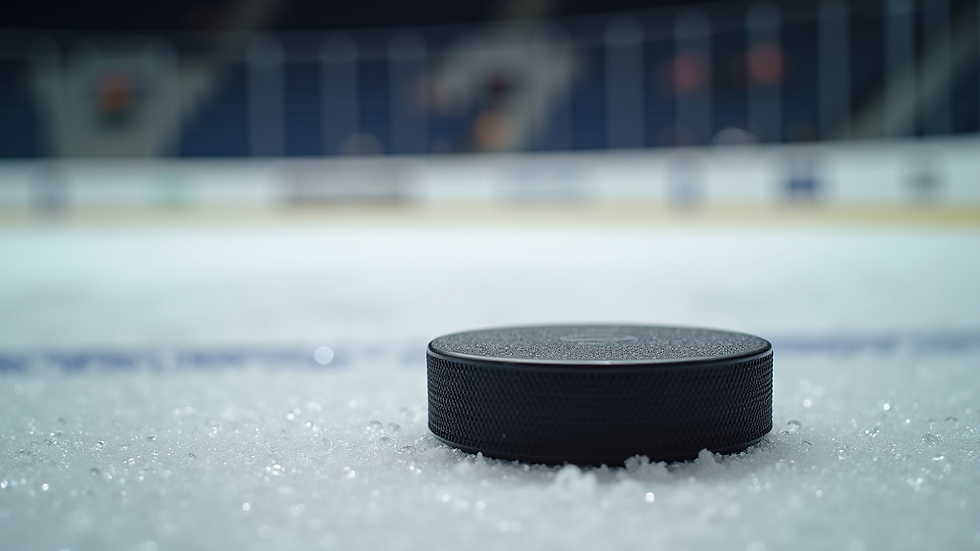5 Essential Face-Off Techniques for Beginner Hockey Players to Master
- Richard Kirby

- Oct 15
- 3 min read
Hockey is not just about speed and skill; it's a game of strategy and precision. One of the most vital skills that beginner players need to master is the face-off. A face-off is the crucial method used to start play after a stoppage, and winning it can deeply influence the game's momentum. Understanding various face-off techniques can greatly enhance a player’s performance on the ice. In this post, we will uncover 5 essential face-off techniques for beginner hockey players to master.

1. The Standard Face-Off
The standard face-off is the most commonly used type that occurs at the beginning of periods or after stoppages. In this technique, players from each team position themselves opposite one another, ready to react as the referee drops the puck in the center.
Winning a standard face-off involves finding the optimal stance. A low center of gravity helps in maintaining balance and offers leverage. Players should aim to push the puck backward towards teammates. For example, during a face-off in the offensive zone, winning the puck back to a defenseman or forward positioned for a shot can create immediate scoring opportunities. According to statistics, proficient face-off teams can dominate puck possession up to 55% of the game time.
2. The Quick Draw
The quick draw is designed to catch the opposing player off guard. Speed and anticipation are key here. When the referee drops the puck, the player must react swiftly and often pull the puck back faster than the opponent.
To master the quick draw, players need to enhance their reaction times and stick handling. Consider observing your opponent’s stance closely. If you notice that they lean forward just before the puck drops, use that to your advantage. For instance, if you can pull the puck back in that fraction of a second, you can gain possession and launch a fast attack. This technique is crucial in close games, especially when the stakes are high. Studies show that quick draws can lead to scoring chances, changing the game's score like a well-timed surprise.
3. The Tie-Up
The tie-up face-off is a tactical move often employed when both players are evenly matched. Here, both players engage their sticks and bodies, resulting in a stalemate that can keep the puck from moving.
For success in a tie-up, players must use their body weight strategically. By leaning in while maintaining a firm grip on their stick, players can control the puck's movement. For example, during a defensive zone face-off, creating a tie-up can allow teammates an opportunity to swoop in and retrieve the puck. This technique often requires strong communication and teamwork, which can lead to effective transitions from defense to offense.
4. The Backhand Win
The backhand win technique is less common but can be extremely effective. It involves using the backhand side of the stick to push the puck backward, catching the opponent off guard.
To proficiently execute a backhand win, players should focus on developing their wrist strength and stick control. For example, if facing a bigger opponent, utilizing the backhand can slide the puck away from them and into the path of a teammate. Statistics show that varying your approach can enhance face-off win chances by up to 20%, making this technique one to master.
5. The Offensive Zone Face-Off
The offensive zone face-off is tailored for situations where the puck is located in the attacking zone. In this case, the player must win the puck and also help set up a play for their team.
To excel at this technique, players should ensure effective communication with teammates before the puck drop. For instance, if you are taking the face-off and a teammate is ready for a quick shot, aim to win the puck directly to them. This approach combines strategy, precise timing, and teamwork, crucial for creating successful scoring chances.

Final on the 5 Essential Face-Off Techniques for Beginner Hockey Players to Master
Mastering face-offs is a fundamental skill for beginner hockey players. By understanding and practicing these five techniques—standard face-off, quick draw, tie-up, backhand win, and offensive zone face-off—players can greatly enhance their puck possession abilities and positively impact their team's success.
Engage in drills specifically focusing on these techniques during practice. As you invest time on the ice, you will grow into a more confident and skilled player. So lace up your skates, get on the ice, and prepare to implement these techniques like a pro!
Remember, practicing often will help you progress faster, the Ottawa West Beginner Hockey Program has weekly practices for adult men and women looking to improve their hockey skills in a semi formal coed training program. We do offer formalized skating lessons in Kanata and Stittsville, player and goalie training, and our program is very popular with women and girls.




Comments